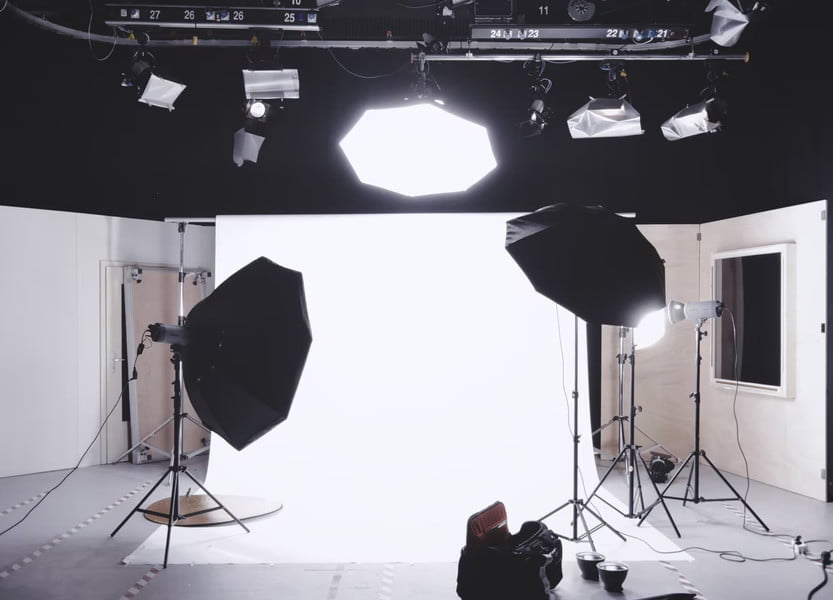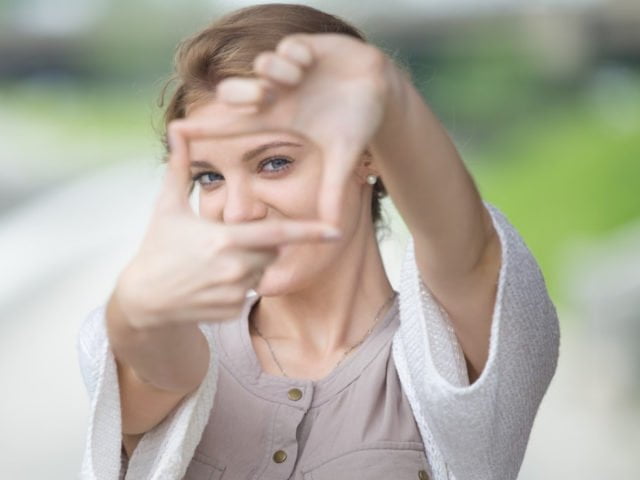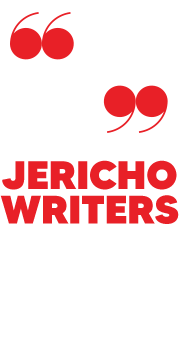You’ve finally finished your book! After months of writing, followed by toing and froing with your beta readers and editor, the book is ready to go to print. But just as you’re thinking of jetting away somewhere hot and having a much-deserved rest, your publisher (or Amazon Central) asks you for an author headshot.
You could give them that photo of you at your cousin’s wedding, or the one work took for their website. Right?
Wrong.
In this guide, I’ll be explaining how author headshots function, why having the perfect one matters, and I’ll show you how to organise a professional photoshoot, get the right look, and make the best use of the result. I’ll also link to some real-life author headshot examples.
The Importance Of Author Headshots
Like any aspect of self-branding, the writer headshot should never be overlooked. However open-minded we like to think of ourselves, people make snap decisions about each other and what they have to offer based on what they look like. This also holds just as true for an author on the back of a book, as well as people we meet face to face.
This is both bad news and good. While a poor author portrait could put potential readers off your work, a good one can do the opposite. It’s an excellent opportunity to communicate your genre, tone, and style. And it’s in your control!
This is why it makes sense to invest time and money hiring a professional photographer for a photoshoot (unless you have a generous friend in the business who will do you a favour, or you’re exceptionally good at selfies and have a well-lit studio at home).
So where do you start?
Author Headshot Tips
Find The Right Photographer
Traditional publishers will occasionally arrange author headshots themselves. Usually, however, it is left to you to choose a good local photographer. Make sure you follow any specific instructions from your publishing house – and if you’ve collaborated with somebody else on this book, you will both need your own photo.
The ideal photographer will have taken this kind of portrait before, and they should be able to show you some of their previous work to help you decide. Take a look at the photographer’s online portfolio or check out the name of photographers that took author headshots you like from other local writers.

Are They Right For You?
Choosing a photographer may not be a life-long commitment, but you are paying them to take photos that will be defining you as an author – not to mention spending a morning or afternoon with them. It’s important you feel comfortable around them. Meet them first to discuss your requirements or have a quick Zoom call to get an idea if you will work well together (after all, you may need more photos in the future). If you’re not happy, walk away. The more comfortable your photographer makes you feel, the better the results will be.
Calculate The Best Package For Your Budget
Author headshots can cost thousands of pounds or dollars. However, the average cost is between £100 and £150 (US$100 and $250). Location shoots with multiple looks and outfit changes are likely to cost more than straightforward studio shots in front of a single background.
Confirm the price and what to expect within the package. Ideally, you want to own the images you choose (the alternative is paying a licence fee every time you use one). Find out whether you will need to pay for each photo separately or if the photographer will give you all the images in a digital file.
You may want your photos retouched to remove blemishes (dark circles under the eyes, for instance). The need for this may only become obvious after the shoot and add to the cost as it’s not always included. So be prepared for that.
Create A Good Brief
Decide the impression you want to make with the headshots and communicate this clearly to your photographer. What do you need to consider?
Research your competition
To get an idea of what style of author portrait photo is right for you, look online at the Amazon pages and websites of other writers in your genre for inspiration.
What are you trying to get across in your author portrait? Are you fun and lively, or moody and dark? Is your work serious literary fiction, or do you write light and fun rom coms? The photos on the website of a picture book author will be very different from the one Ian Rankin uses for his crime books, for example.
Black-and-white or colour?
While black-and-white works well for high-brow literary types, most commercial authors choose colour. A traditional publisher may make this decision for you. The average release from Galley Beggar press wins at least one literary award, so it’s no surprise the author photos on their website are all in monochrome. But bear in mind, if you wish to use the same photo for press, many magazines ask for a colour photo. Some writers use a number of images from the same shoot for various things.
Location, Setting, And Background
The focus of the headshot should always be on the author’s face. Thus, many writers use a plain studio background, particularly for online stores like Amazon. However, others use an appropriate setting, hoping it will help communicate their brand.
Mary Berry, famous cookery book writer and presenter of The Great British Bake Off, stands in a white kitchen for her author portrait. Robert Thorogood’s photo is in front of Marlow, the UK setting for his new cosy crime series. Cathy Cassidy, a Young Adult writer, is pictured in the back of a VW campervan.
The dark red wall behind Rory Sutherland’s Twitter profile, clashes with the bright red jacket he’s wearing. The overall effect is unexpected for a business guru, yet his latest release ‘Alchemy’ has the tagline, ‘The Magic of Original Thinking in a World of Mind-numbing Conformity.’ He’s not trying to be corporate.
Plain studio shots work particularly well for serious black-and-white photos. But remember, an entirely plain white background flatters very few people.
Image Styling: Be Yourself
If I was being entirely myself in a writer headshot, I wouldn’t brush my hair. That kind of honesty, however, would probably stop me selling books.
I’m not suggesting you lie about who you are, but it’s important to project how you wish to be perceived. Think of yourself as the main character in a book about your writing career. What does this person wear? What expression and mannerisms do they use? Are they business-like, fun, or very serious?
Outfit
Even authors going for ‘zany’ should keep their outfits as simple as they can. The safest plan is to wear one or two layers of plain clothing with an open collar. Busy patterns will detract from your face, as will too much jewellery. (The shy may see that as a good thing, but it isn’t).
Period costumes may well suggest historical romance, but they will detract from the author’s face – and it’s important that your readers (and the press) know what you look like. Period romance author, Evie Dunmore, gets it right. Her outfit suggests a Victorian or Edwardian woman by wearing three simple items – a lace top, a wide-brimmed hat, and a pearl ornament in her hair. Not quite fancy dress, but enough of a nod to her genre.
Different make-up and clothes will look better in colour or black-and-white. If you’re not sure which will work best, play around with both looks. You can always ask to have more than one photo taken at the shoot, but as discussed, this will increase time and possibly cost. Save time and money by taking selfies at home and asking friends and family what they think suits you best.
Hairstyle
This is probably not the time for a radical new hairstyle unless you’re given to eye-catching changes. Ideally, you want readers to be able to recognise you at author events. Even if you don’t think you’ll attend real-life book signings, you may want to appear online in a Facebook live, for instance. So if you’re usually blonde and wear your hair back in a ponytail, do that. Now is not the time to try out a bright pink beehive.

Lighting
If the shoot is outside, the photographer will probably make the most of the natural light. Depending on the time of day this may be warm, soft, and flattering light. Let them decide the best time of day to achieve the look you are going for. For instance, during the late morning or early afternoon, there’s usually a yellow light with few harsh shadows. And the ‘golden hour’, the period just after sunrise or before sunset, gives a red light and softer look.
Wherever the shoot, light on the face makes you look fresher and more approachable, a good thing for almost every author. If you write crime or horror, an arty portrait with your face in shadow may seem like a good idea. Take care, however. You don’t want to be confused with one of your villains!
Practice Your Pose
Body language matters, and so does being relaxed in front of a camera. This is the time where the mirror is your friend.
Choose a pose that feels natural. Don’t force a smile or anything that doesn’t feel right. If you’re not comfortable, it will come across in your photos.
Consider if you’re going to have your hands in the picture and what you can do with them to add to your message. For example, you could rest your chin and hands on a flat surface for an informal feel. Or hold your chin to look like a professional with good advice. Some authors cross their arms, but remember that depending on your genre this can look defensive and may make you look unapproachable.
Again, take a look at what other authors are doing. Some writers opt for the close up to be framed so no arms make it into the shot (a lot less pressure).
Props
You could also think about using an appropriate prop (and whether it would make you more or less comfortable during the shoot). Perhaps, you could hold your own book, or the Golden Dagger you were awarded last year. Again, the emphasis should be on you, so keep it simple and avoid cliché. Only use a prop if it will add to your overall message.
Also bear in mind whether this photo is just for one book, or you want it to be used for a number of years. It doesn’t always help to use a photo of you holding up your debut when five books down the line you are known for a lot more.
Rest Before The Shoot
A photoshoot may seem like a largely passive activity, but how you feel on the day will affect how you look and come across on camera. Avoid those dark under-eye circles by drinking plenty of water and getting a good night’s sleep beforehand.
Look Directly At The Camera
Many headshots break this rule, but it helps create a sense of connection with the viewer. Again, ask yourself if you want to come across as a whimsical, mysterious writer or direct and approachable.
Be Relaxed
The photographer will do their best to put you at ease, but there are also practical things you can do to help yourself on the day.
Allow yourself plenty of time to get to the shoot, so you’re not rushing.
Remind yourself that however badly it turns out, your author headshot is nowhere near as important as writing a good book. And the photographer will take lots of photos, so you can always discard those you hate at the end. If it puts your mind at rest, ask to take a look at the first few shots to see if they are working.
And, going back to acting like a character in your own book, if it helps hide behind your new persona. Yesterday you were a nervous introverted debut writer, but today you are a famous author – cool, calm, and collected.
Listen To Your Photographer
They should be able to guide you to an author headshot that works. If they say that a certain pose works best, listen to them. Take direction. They know what works.
Ask For Black-And-White Copies Of Your Colour Photos
This increases your choice later on. You can convert the photos digitally yourself, but it’s usually better done by a professional.
Select The Right Images
You may be tempted to choose the image that makes you look fifteen years younger or like a supermodel – but the best author headshot is the one that conveys the right message and reinforces your ‘brand’.
Ask other people to tell you honestly what they think, especially if they read the genre you write. Why not enlist the help of your followers on social media or your publisher’s publicity department? This can be a fun way to connect with readers and see yourself through their eyes.
Use The Same Photo Across All Of Social Media
Consistency is key when it comes to self-branding. Whatever image you choose to use on your website or the back of the print book, use the same photo across online stores and social media. This will make it easier for readers to recognise you as the same person and, hopefully, increase your number of follows.
But, like most rules, some are made to be broken. Picture book author, Julia Donaldson, uses a headshot with a plain studio background for her Amazon page but she’s surrounded by soft toy versions of her characters on her website. There’s a particularly good photo of her reading to the Gruffalo.
So, if your Linked In profile is serious and you are using it to connect to the industry to sell them a self-help book you are pitching – perhaps don’t use the same sultry image of yourself that appears on the website of your raunchy erotica series.
Keep Your Photos Up-To-Date
Whatever the temptation to stay eternally young in your reader’s minds, you should upload a new book author headshot every two to three years – especially if you change genre or publisher. As your career evolves, so should your photos.
To Summarise…
All in all, preparing for the perfect author portrait shoot is simple.
Hire a professional, brief them well, prepare your look and setting beforehand, and relax during the shoot. If you follow this advice, you should have a great headshot to add to the rest of your marketing package.
Jericho Writers is a global membership group for writers, providing everything you need to get published. Keep up with our news, membership offers, and updates by signing up to our newsletter. For more writing articles, take a look at our blog page.











